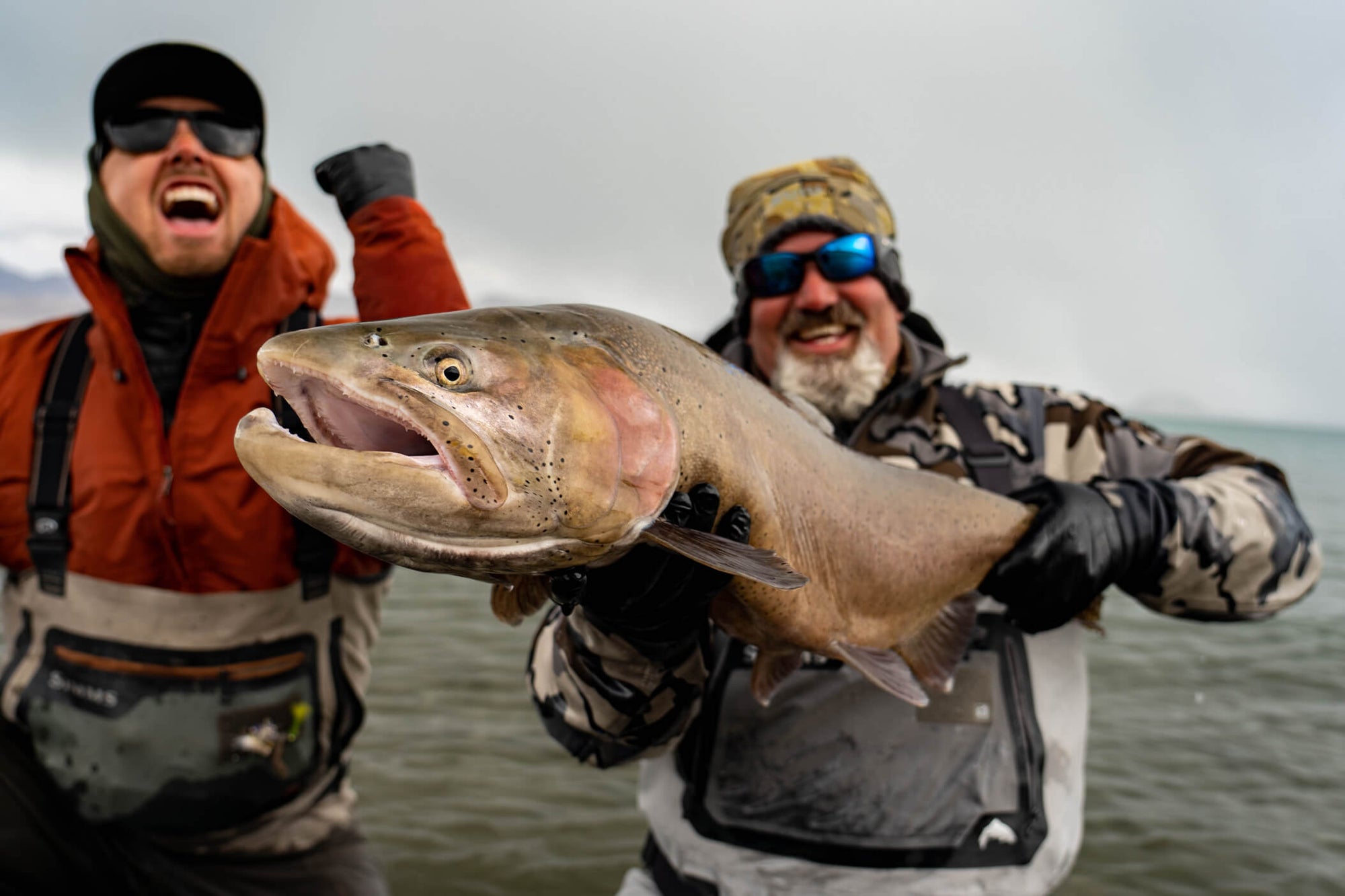Article Written by Mike Anderson. Learn More About the author Below / Article Read Time: 5 Minutes
Pyramid Lake is one of the last remnants of the ancient inland sea known as Lake Lahontan. This massive sea, covered more than 8,500 square miles in its prime and is centralized in northern Nevada with parts stretching into California and Oregon. At the turn of the Ice Age, climate change slowly shrunk the lake's territory to what it is today, (Pyramid Lake and Walker Lake) leaving its last remnants salty and alkaline. A species of trout thrived in the waters. They were the apex predator, and to this day one of the largest inland salmonid species to ever live. Lahontan Cutthroat Trout are a massive trout species. Historically, a 41 pound Lahontan Cutthroat Trout (LCT) was caught in 1925, but rumors speculate these fish weighed in at over 60 pounds before the 20th century. Today, these fish routinely weigh more than 20 pounds and the average fish in the lake is around 25 inches, roughly 6 pounds.

What to Expect:
Pyramid Lake is a barren landscape. It has almost no trees except for those around civilization, and its surface is marked by large rock formations called Tufa (limestone deposits formed from geysers that continually erupted into Lake Lahontan, eventually solidifying into irregular structures). The most well known Tufa structures being the Pyramid and the Stone Mother. Pyramid Lake is also a terminal lake, the water flows in from the Truckee River at the south side of the lake and never leaves. Floods and evaporation control the lakes level leaving very dramatic drop-offs along the lakes shore. If you stand on its soft, sandy beaches in calf deep water, with your next step you could be in 15 plus feet.

Sinking and stripping:
There are a few techniques that we use to target these large trout. The first is using a sinking line and dragging flies along the bottom. This may sound like a normal technique that you have fished for trout before, but with the gear we use and the distance casts that we need to make, it is more akin to fishing in the surf or fishing for striped bass off the coast of Massachusetts. 8 weight rods are preferred, but any rod from a 7-9 weight will work. With this technique, we are targeting the fish as they are on or near the bottom. The goal is to cast as far as comfortably possible (but the further you cast the more chances you have of crossing the paths with an LCT.) These lines sink at roughly 6 inches per second, allowing you to count down as your lines sinks and gets to the desired depth (e.g. 30 seconds=15 feet depth.) The retrieve varies depending on the temperature of the water and the weather conditions, so vary it every 20 minutes or so. A medium paced strip, without pauses, is usually how I start. I use the Cortland Dredge 300 for my line, and my preferred leader is 2 feet of 0x Ultra-Premium Tippet adjoined to another 6 feet of 0x or 1x tippet using a triple surgeon knot leaving a 6 inch tag.

Indicator fishing:
The other main way that we fish out of the lake is with a floating line and an indicator. This is very similar to how you may have fished a river or other still waters. Suspending balanced leeches, Midges, and Mayfly Nymphs can be extremely effective as the flies remain in the strike zone for long periods of time. The preferred rod for this technique is a 11’ 6-7 weight switch rod. Casting two handed with a roll cast helps anglers to cut through wind, which there's usually a lot of at Pyramid lake, but it also keeps you from back casting into the aforementioned Tufa rocks that most anglers fish from with this technique. My leader is a 7.5-9 ft mono tapered leader (I'll use the shorter leader in the spring when the fish are shallower) to which I will attach a swivel or tippet ring. From there, I'll add another 4 feet of 2x or 4x Ultra-Premium (2x in the fall/winter, and 4x in the spring when the fish are shallow and more picky). For the indicator technique, I want my flies to be three feet apart and always on a tag. Changing depth is critical to being successful. Change your depth every 30 minutes, if needed, until you find the depth the fish are cruising at that day. Fly choice does matter too, of course, but I'll change my depth three times before I change a fly.

About the author
Mike Anderson is the head guide at the Reno Fly Shop. Mike is a Nevada native and has been fly fishing in his local waters for more than 20 years. He started guiding 7 years ago, and has made teaching fly fishing and showing guests his local waters his passion. To book a trip visit Renoflyshop.com or call the shop at (775) 323-3474. Check out Mike and Reno Fly Shop on Instagram: @renoflyshop @mt_anderson
Products Mentioned in This Article:
Streamer Dredge 30Ultra Premium Fluorocarbon Tippet


